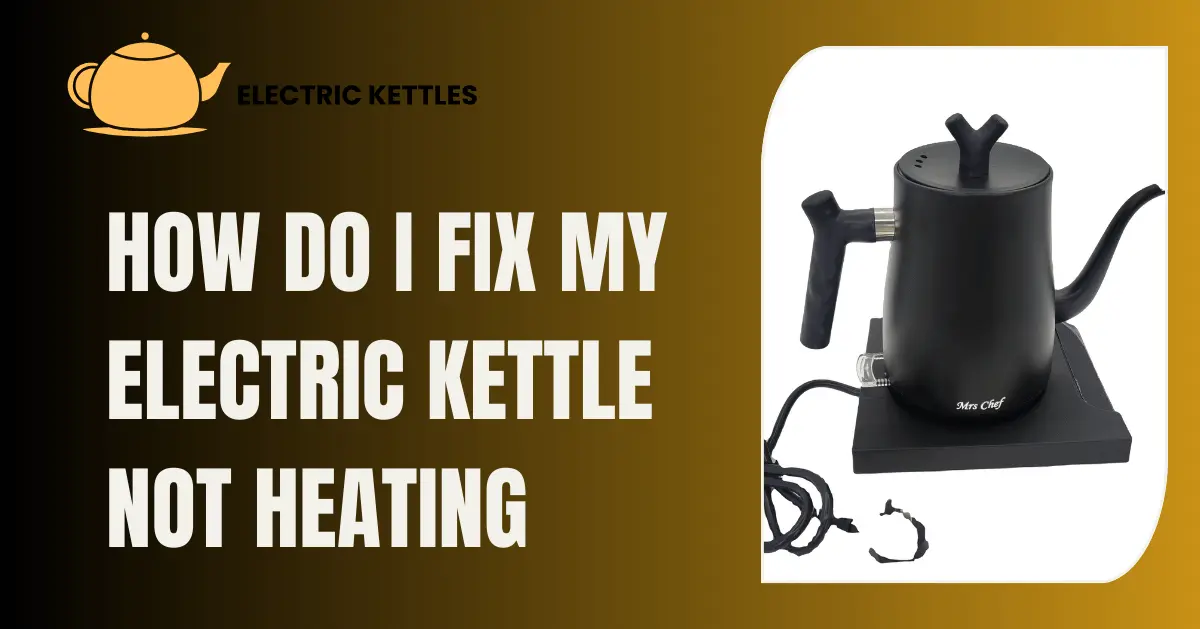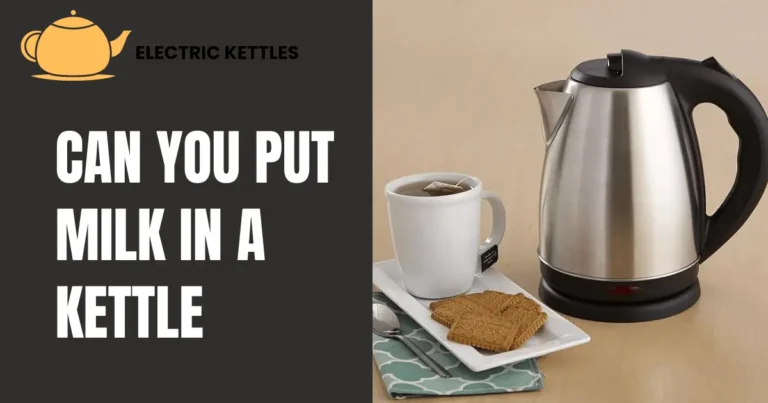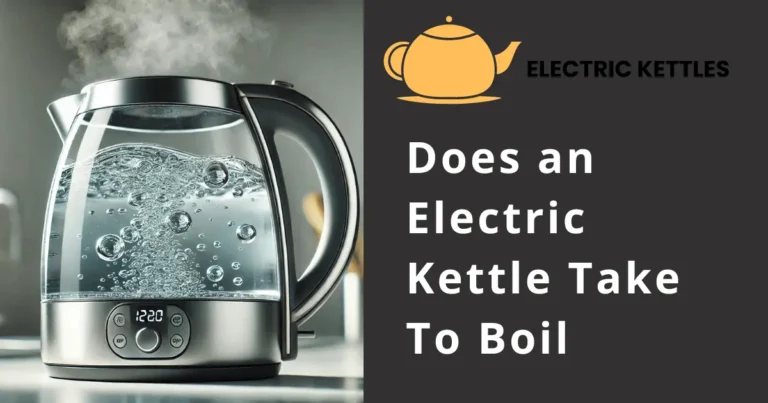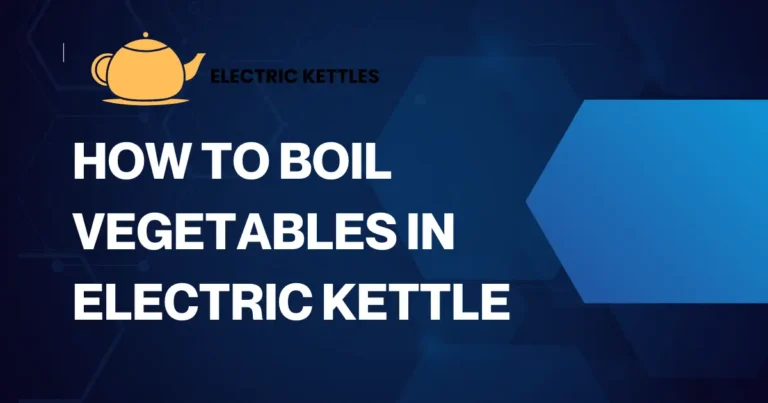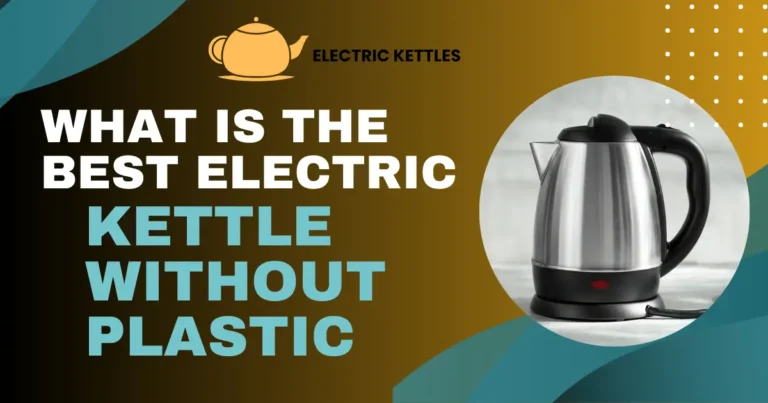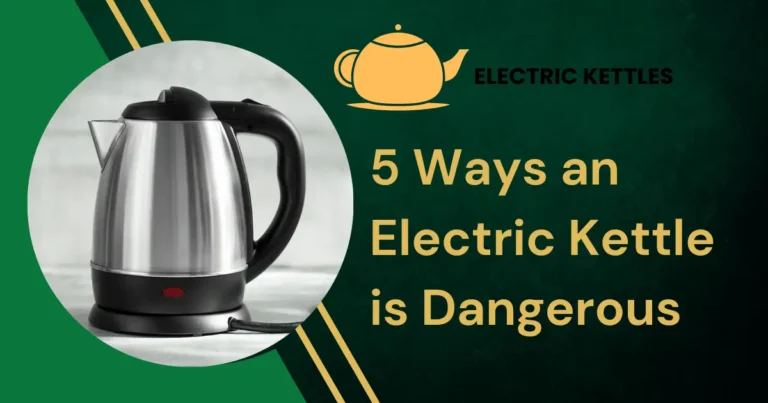How Do I Fix My Electric Kettle Not Heating
Electric kettles heat water using an electric heating element at the base. When plugged in, electricity flows to the element, which heats up and boils the water. Most kettles have an automatic shut-off feature that stops the heating once the water reaches a certain temperature. This makes electric kettles fast and efficient for boiling water.
If your kettle stops heating, it’s important to fix the issue quickly. Not addressing it can lead to further damage, making repairs more difficult or costly. A broken kettle is also inconvenient, especially if you rely on it daily. Identifying and solving the problem early ensures that your kettle works properly and lasts longer.
Table of Contents
Common Types of Electric Kettles
- Standard Electric Kettles: These are the most basic models available on the market. They usually feature a simple on/off switch and can boil water quickly, often in just a few minutes. Many standard kettles also come with automatic shut-off mechanisms to prevent boiling dry, enhancing safety and energy efficiency.
- Variable Temperature Kettles: These kettles allow you to set specific temperatures for different types of tea or coffee, such as green tea, black tea, or French press coffee. They often feature temperature presets and a digital display, making it easier to brew beverages at the ideal temperature for the best flavor extraction.
- Stainless Steel Kettles: Made from high-quality stainless steel, these kettles are known for their durability and resistance to rust and corrosion. They often have a sleek design that complements modern kitchens. Additionally, stainless steel retains heat well, keeping your water hot for longer periods, which is beneficial for multiple servings.
- Glass Kettles: Featuring a transparent body, glass kettles allow you to see the water as it heats, making it easy to monitor the boiling process. They often have a modern aesthetic and are easy to clean, as glass does not retain odors or flavors. However, they can be more fragile than other materials, requiring careful handling.
- Travel Kettles: Compact and lightweight, travel kettles are designed for portability, making them ideal for frequent travelers or students. They often have a smaller capacity and may feature dual voltage settings, allowing them to work in different countries. Many travel kettles are designed to fit easily into luggage or small kitchens.
- Cordless Kettles: These kettles come with a detachable base, allowing you to lift the kettle off the base for easy pouring without being hindered by a power cord. This feature adds convenience, especially in kitchens with limited counter space or for those who prefer a more mobile kettle for serving at the table.
Reasons for Heating Issues
Electric kettles are designed to heat water efficiently, but several factors can prevent them from functioning correctly.
Faulty Power Supply
A common reason your electric kettle may not heat is an issue with the power supply. This could be due to a damaged power cord, a malfunctioning plug, or problems with the electrical outlet. If the kettle isn’t receiving enough power, the heating element won’t activate. To check, try plugging the kettle into a different outlet or inspect the power cord for any visible damage.
Defective Heating Element
The heating element is crucial for boiling water. Over time, it can wear out or become damaged, preventing the kettle from heating properly. Signs of a defective heating element include unusual noises, reduced heating efficiency, or no heating at all. Testing the heating element with a multimeter can help determine if it needs replacement.
Temperature Control Problems
Electric kettles often have built-in thermostats or temperature controls to regulate the heating process. If these components malfunction, the kettle might not reach the desired temperature or may shut off prematurely. Issues with the thermostat can stem from electrical faults or wear and tear over time, requiring professional repair or replacement of the temperature control unit.
Damaged or Worn Out Switches
The on/off switch controls the power flow to the heating element. If the switch is damaged or worn out, it might not make proper contact, preventing the kettle from heating. Flickering lights on the kettle or intermittent heating can indicate a faulty switch. Replacing the switch is usually necessary to restore proper functionality.
Internal Wiring Issues
Internal wiring connects various components of the kettle, including the heating element and the power switch. Over time, wires can become loose, frayed, or damaged, disrupting the electrical flow needed for heating. Inspecting the internal wiring for any signs of damage and securing loose connections can help resolve heating issues.
Step-by-Step Troubleshooting Guide
When your electric kettle stops heating, following a step-by-step troubleshooting process can help identify and resolve the issue.
1. Check the Power Source
The first step is to ensure that the kettle is receiving power. Plug the kettle into a different outlet to rule out issues with the current socket. Examine the power cord for any visible damage, such as fraying or loose connections. If the power cord or plug is damaged, replacing it might fix the issue. Also, check if the circuit breaker has tripped, as this could cut off power to the kettle.
2. Inspect the Heating Element
The heating element is responsible for boiling the water, so a faulty element can prevent the kettle from heating. Unplug the kettle and inspect the element for signs of corrosion or damage. If your kettle allows, use a multimeter to test the heating element for continuity. If it’s not working properly, replacing the heating element may be necessary.
3. Clean the Kettle
Mineral deposits like limescale can build up inside the kettle and affect its performance. Regular cleaning and descaling can help resolve heating issues. To descale, fill the kettle with a mixture of water and vinegar or use a descaling solution. Let it sit for 15-20 minutes, then boil the solution. Afterward, rinse thoroughly to remove any residue. Descaling the kettle will help it heat more efficiently.
4. Test Temperature Control Settings
If your kettle has variable temperature settings, ensure that they are properly set. Sometimes, incorrect settings can prevent the kettle from heating. If the kettle shuts off too early or doesn’t reach the desired temperature, there could be an issue with the thermostat or temperature sensor. Resetting the kettle to its default settings may solve the problem, but if the issue persists, the temperature control might need repair or replacement.
5. Examine Safety Features
Many modern kettles are equipped with safety features like boil-dry protection and automatic shut-off. If the kettle is overheated or boiled dry, these features may have activated to prevent further damage. Let the kettle cool down, refill it with water, and try boiling again. If the safety features are overly sensitive or faulty, resetting the kettle or consulting the manual for specific reset instructions can help.
6. Inspect the On/Off Switch
A malfunctioning on/off switch can prevent the kettle from receiving power, even if everything else is working properly. If the switch feels loose or doesn’t click properly when pressed, it could be worn out or damaged. Replacing the switch may resolve the heating issue. You can also check the indicator light to see if it flickers when turning the kettle on, as this could indicate a faulty switch.
7. Check for Internal Wiring Problems
If all other steps fail, internal wiring might be the issue. Over time, wires inside the kettle can become loose or damaged, disrupting power to the heating element. While this step requires more expertise, checking for frayed wires or loose connections may reveal the problem. If you’re not comfortable with electrical repairs, it’s best to consult a professional for further assistance.
When to Seek Professional Help
There are times when fixing your electric kettle on your own might not be enough. If the kettle has visible damage, such as cracks, melted parts, or serious wear and tear, it may be unsafe to use. When you notice these issues, it’s best to seek professional help to ensure the kettle can be repaired safely or replaced if necessary.
If you’ve tried basic troubleshooting and the kettle still doesn’t heat, the problem could be more complex. Issues like internal wiring faults or defective components often require specialized tools and knowledge. A professional technician can properly diagnose and fix these issues, saving you time and ensuring the repair is done safely.
Conclusion
Fixing an electric kettle that’s not heating often involves simple steps like checking the power source, cleaning the kettle, and inspecting the heating element. Troubleshooting on your own can save time and money if the problem is minor. Regular cleaning and maintenance can also prevent many common issues, like mineral build-up and faulty switches.
However, if the kettle still doesn’t work after trying these steps, it’s important to seek professional help. Complex problems like internal wiring faults or electrical malfunctions need expert attention. Fixing these on your own can be unsafe.

